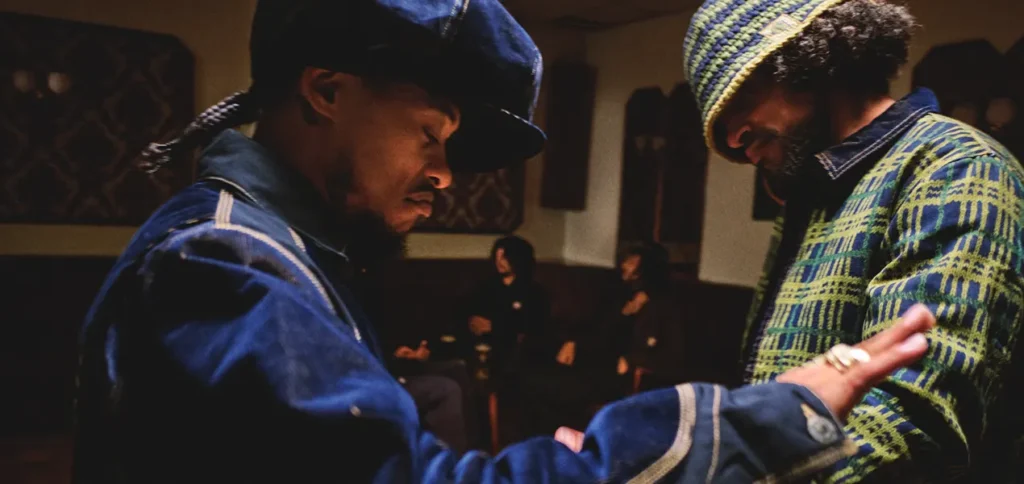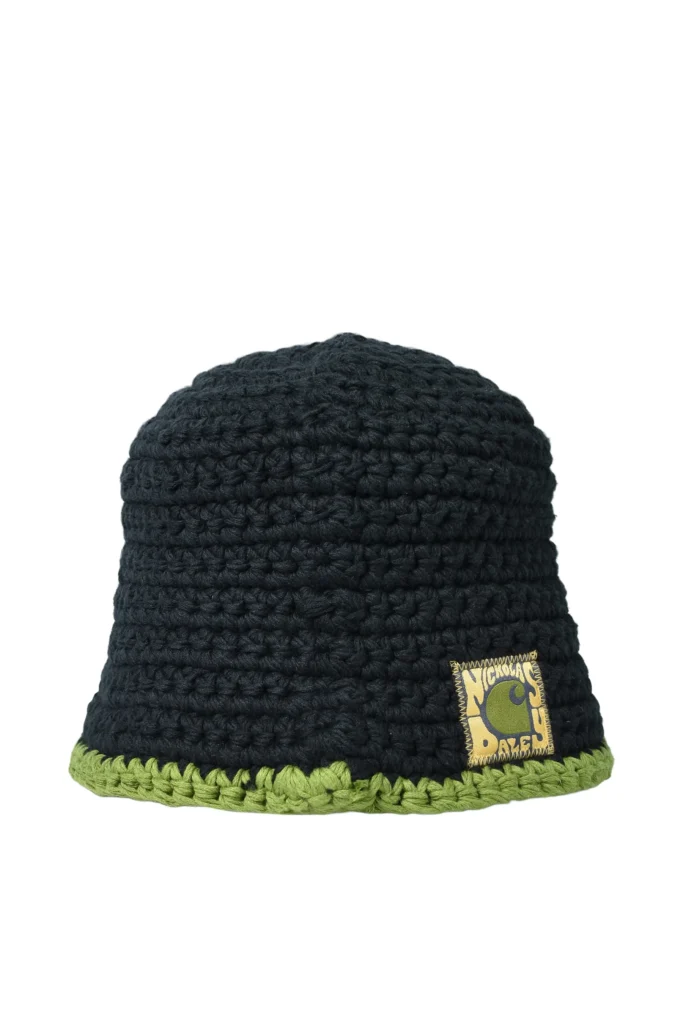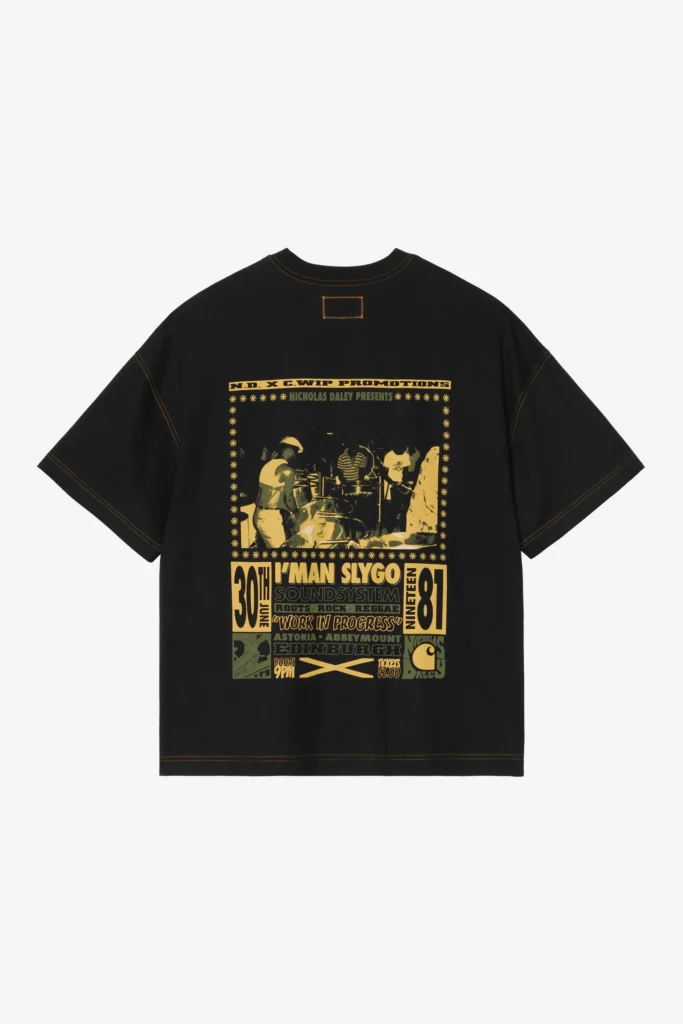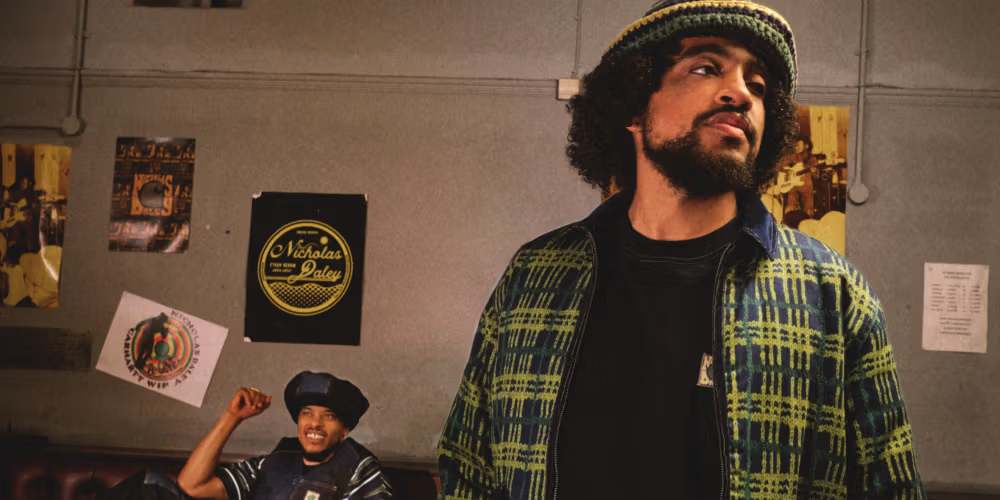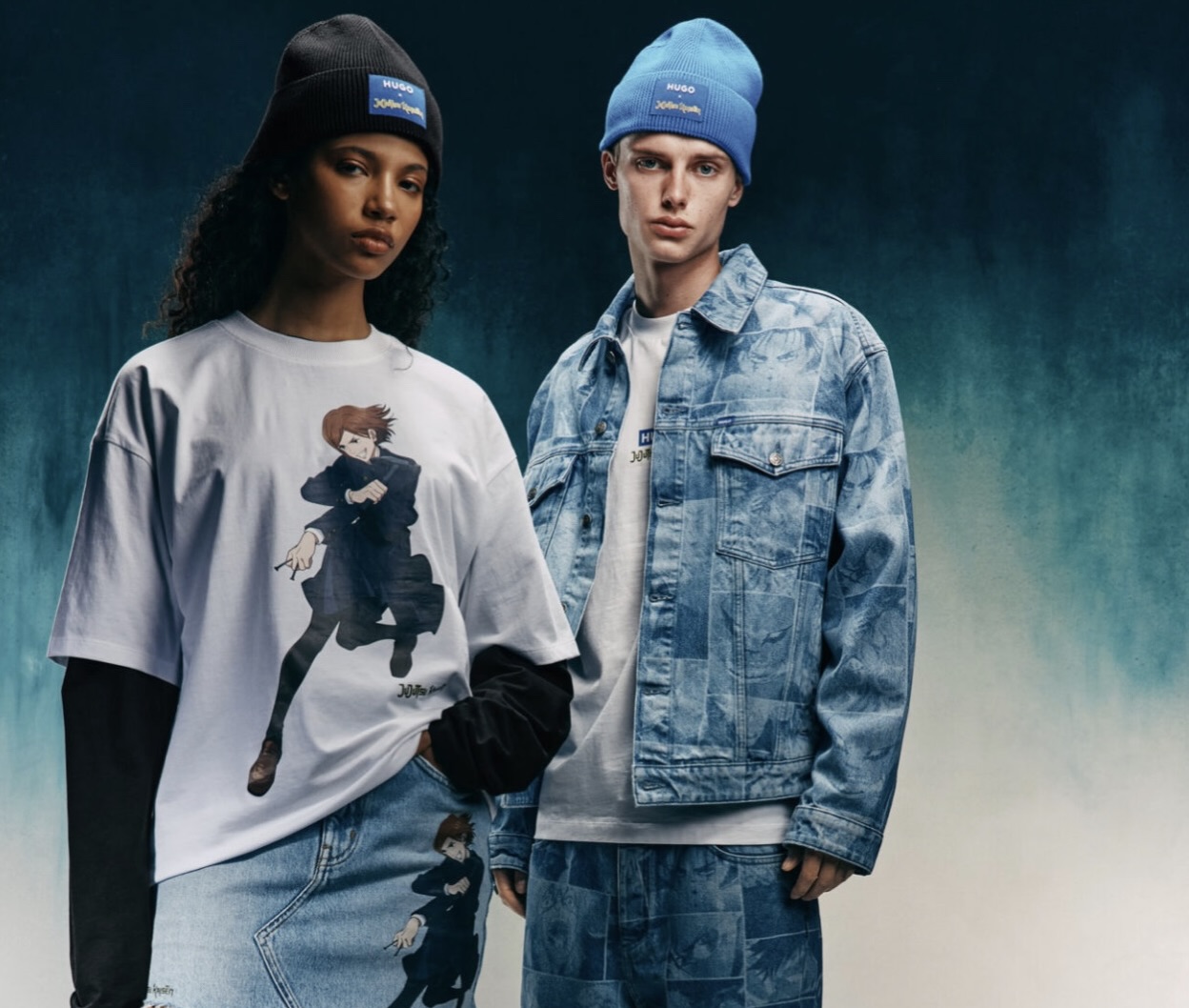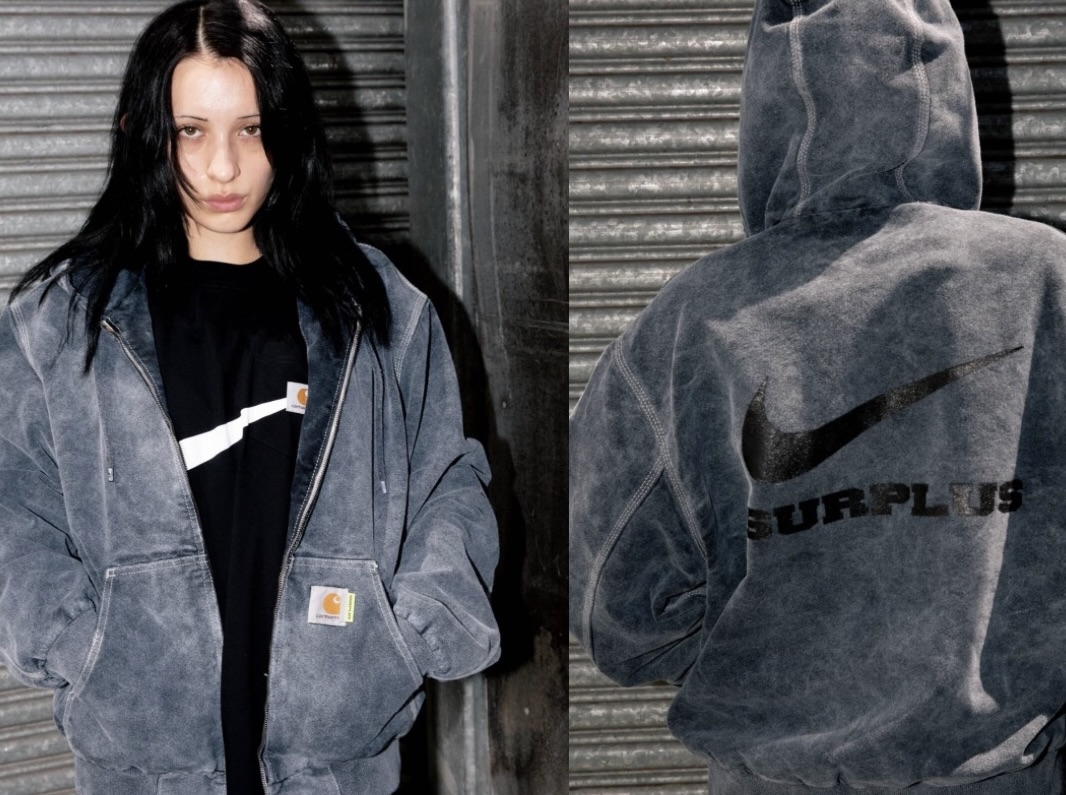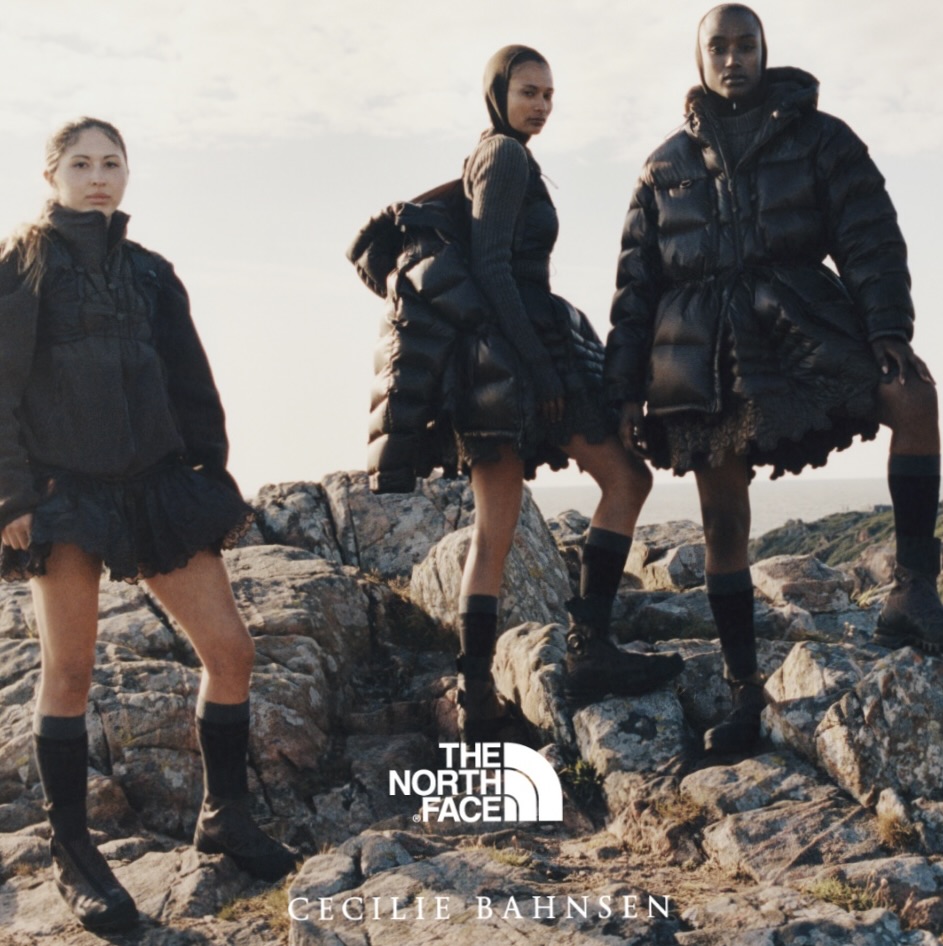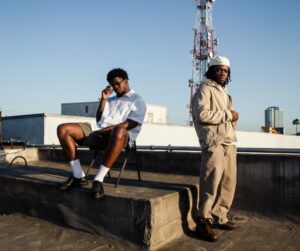Every season, a handful of connections transcend the usual brand-meets-designer formula and become something that genuinely contributes to fashion’s cultural vocabulary. The Fall/Winter 2025 partnership between Carhartt WIP and Nicholas Daley is one such moment—a meeting of workwear pragmatism and deeply personal storytelling. It’s a collection where the seams hold more than fabric; they carry the echoes of reggae clubs, Scottish tartan looms, and the sense of belonging that both communities and clothes can give.
Daley, a designer known for bridging worlds—his Jamaican and Scottish roots, his passion for music, his meticulous approach to craft—translates his heritage into design with an authenticity that feels intimate, not performative. Carhartt WIP, the European arm of the iconic American workwear brand, brings its industrial heritage and street credibility. Together, they’ve built a capsule of thirteen pieces that do more than clothe the body—they narrate identity.
the meeting of two worlds
Carhartt WIP (Work In Progress) has long mastered the art of collaboration without compromise. Since its founding in 1994, it has reinterpreted the durable Carhartt ethos for a generation raised on hip-hop, graffiti, skate, and street culture. It understands subcultures as the true runways of urban life. Its archive of partnerships—ranging from A.P.C. to Wacko Maria—reveals a brand comfortable crossing the bridge between blue-collar functionality and global fashion credibility.
Nicholas Daley, by contrast, operates from a place of intimacy. Born in Leicester to a Scottish mother and Jamaican father, his collections often feel like family albums. He designs not to shock but to share—threading themes of music, migration, and multiculturalism into his garments. His parents ran Reggae Klub, one of Scotland’s first reggae nights in the 1970s and early 80s, a detail that often surfaces as an emotional cornerstone of his creative practice.
Their collaboration, therefore, feels natural rather than strategic—a convergence of mutual respect for craft and community. It’s less about hype and more about history, less about capsule drops and more about collective memory.
concept
Daley’s guiding trinity—community, craftsmanship, and culture—anchors this collaboration. Each element resonates throughout the collection.
Community is evoked through music. The Reggae Klub heritage isn’t a marketing hook but a heartbeat. Daley reimagines the spirit of those gatherings—where Scots, Jamaicans, and students danced together in 1970s Edinburgh—as an act of unity. The capsule embodies that same coming-together: utilitarian silhouettes for communal spaces, garments that move, breathe, and connect.
Craftsmanship reveals itself in material tactility. The capsule reinterprets Carhartt WIP’s archetypes—the OG Chore Coat, the Double-Knee Pant, the Cargo Pant—through Daley’s artisanal eye. Textures shift from rigid canvas to brushed herringbone twill, from factory-ready denim to bespoke tartan prints woven by his mother’s knitting circle. Even the onion-quilted linings, corduroy collars, and brass hardware speak to tactile pleasure, not just durability.
Culture sits at the crossroads of Jamaican rhythm and Scottish restraint. The collection fuses two flags, two climates, two ways of living. Jamaican greens and golds blend with Scottish blues and deep navies. Tartan meets twill; reggae meets workwear. It’s a study in cross-pollination—the idea that cultural identity, like good design, thrives when hybrid.
View this post on Instagram
lang
Every look in the capsule honors Carhartt WIP’s workwear DNA but layers it with Daley’s storytelling. The familiar becomes personal.
The Modular Jacket, for instance, is a masterclass in reinvention. Its Harrington-inspired silhouette, built from cotton herringbone with an onion-quilted lining, features a two-tone corduroy collar and custom tartan print. The design feels nostalgic yet renewed—like a song sampled for a new generation.
The Double-Knee Pant, a cornerstone of Carhartt’s industrial past, transforms through color blocking in deep navy and mustard—tones borrowed from both Scottish and Jamaican symbology. Reinforced knees nod to the laborer’s grind, while their tailored cut repositions them as street-ready statements.
Graphic elements run throughout. T-shirts feature artwork inspired by Reggae Klub flyers, while badges and woven labels echo 1970s record-label typography. Daley treats garments as storytelling canvases: even accessories—like the incense sticks included with the capsule—conjure atmosphere, linking scent to memory, ritual to heritage.
Functionality remains central. These are clothes meant to be worn, not worshipped. But they carry something extra: an aura of the maker’s intent, a sense that culture can live in stitching as much as in sound.
style
Daley’s choice of materials and palette is anything but arbitrary. It is an encoded language of identity.
Textiles are the connective tissue between his dual heritages. Herringbone twill nods to Britain’s tailoring tradition; tartan channels his mother’s Scottish lineage, yet it’s reinterpreted with warmth, vibrancy, and irregularity—closer to hand-dyed Caribbean textiles than rigid clan uniformity. This subversion of tartan is crucial: it transforms the fabric from a symbol of exclusivity into one of inclusivity.
Color becomes a bridge between islands and highlands. Mustard yellow and emerald green recall Jamaican sunshine; navy, indigo, and muted browns recall the mist of Edinburgh’s winter. When layered together, the palette feels neither tropical nor austere—it sits somewhere between them, like a dusk sky over two homelands.
Even texture becomes narrative. Quilting evokes warmth and care, corduroy suggests longevity, while rough twill recalls labor and endurance. Each textile decision amplifies the themes of craft and community—these are materials that invite touch, conversation, and connection.
flow
Among the standout garments, the OG Chore Coat functions as the capsule’s anchor. Historically a worker’s uniform, Daley transforms it into a piece of wearable ancestry. The coat’s structure remains classic, but tartan panelling, custom embroidery, and subtle color contrasts reframe it as a cultural jacket—both armor and archive.
The Poster T-Shirt extends the narrative into everyday wear. Printed with archival graphics inspired by 1970s club flyers, it reaffirms that cultural history can live on cotton jersey just as it does in memory.
The Striped T-Shirt, with its rhythmic pattern and color blocking, metaphorically mirrors a sound wave—an homage to the music that underpins Daley’s world.
The Record Bag embodies movement—both literal and metaphorical. It’s a nod to DJs carrying vinyl across cities, a portable archive of sound and culture.
Each item bears the Carhartt WIP x Nicholas Daley woven label, where the two logos coexist—not merged, but in dialogue. It’s emblematic of the collaboration’s entire premise: coexistence without dilution.
heritage
To understand the significance of this collection, one must look beyond aesthetics to ancestry. Nicholas Daley’s work has long explored the politics of belonging. The son of immigrants, he uses fashion to reconcile dual roots—to weave a narrative that is both personal and universal.
In this capsule, Jamaica is represented not through clichés of color or pattern but through sound and energy. The ethos of reggae—resistance, joy, collectivity—infuses the design spirit. The badges, the movement of fabrics, the warmth of tones all echo Rastafarian philosophy: unity through creativity.
Scotland, by contrast, surfaces through structure and pattern. The discipline of tailoring, the geometry of tartan, the temperate mood of its palette—all these ground the collection. The result is not a binary but a dialogue: Jamaica supplies rhythm and soul; Scotland contributes form and craft.
The meeting of these influences forms a third space—a hybrid that reflects modern identity itself. In today’s globalized fashion world, Daley’s design philosophy suggests that true originality lies not in novelty but in the honest merging of histories.
community
Central to Daley’s practice is the idea that fashion should sustain community, not just consumerism. His collaborations often involve local artisans, musicians, and family members. For this capsule, his mother’s knitting circle contributed to developing the bespoke tartan pattern—a literal weaving of generational knowledge into the garment.
This gesture transforms the capsule from a retail collection into a community project. It reminds us that craftsmanship is collective; it thrives on shared skill and storytelling. Even the promotional imagery reflects this ethos—models are cast from Daley’s circle of friends, musicians, and creatives rather than anonymous faces.
By embedding real people and memories, Daley resists fashion’s tendency toward erasure. Instead, he uses clothing to preserve community histories that might otherwise fade. In doing so, he aligns with Carhartt WIP’s ethos of durability—these clothes aren’t seasonal; they’re built to last, physically and culturally.
trend
The Carhartt WIP x Nicholas Daley capsule embodies several trends shaping the late-2020s fashion landscape.
Heritage as Innovation: Designers are revisiting lineage not for nostalgia but renewal. Daley’s work demonstrates that history can be a design tool rather than an anchor.
Cultural Hybridity: Multicultural narratives have moved from the margins to the core. The blending of Jamaican and Scottish motifs anticipates a decade where hybridity defines identity.
Craft over Hype: Amid an era of drop culture and algorithmic trend cycles, this capsule favors intimacy, handcraft, and small-scale production—values increasingly embraced by discerning consumers.
Workwear Evolution: The continued rise of functional silhouettes reflects a hunger for garments that endure. Carhartt WIP’s DNA ensures that durability remains fashionable.
Sonic Storytelling: Daley’s music-driven design process foreshadows a future where fashion and sound design merge as experiential storytelling.
These elements signal not only the evolution of Carhartt WIP but also a broader shift in fashion’s consciousness—toward authenticity, responsibility, and cultural depth.
impression
The Carhartt WIP x Nicholas Daley Fall/Winter 2025 capsule is not just a clothing line; it’s a cultural dialogue rendered in fabric. It celebrates community in a fragmented age, craftsmanship in a world of mass production, and culture as something that breathes rather than trends.
By merging Jamaican rhythm, Scottish tradition, and Carhartt’s workwear resilience, Nicholas Daley doesn’t just design garments—he restores meaning to them. In an era when collaboration often feels transactional, this one feels like communion. It’s a reminder that fashion, at its most powerful, is both archive and anthem.
Daley’s work reminds us that the soul of style lies in its ability to tell stories that outlive seasons. Carhartt WIP provided the canvas; Daley supplied the melody. Together, they’ve composed something rare—a collection that feels less like a drop and more like a drumbeat echoing across generations.
No comments yet.

